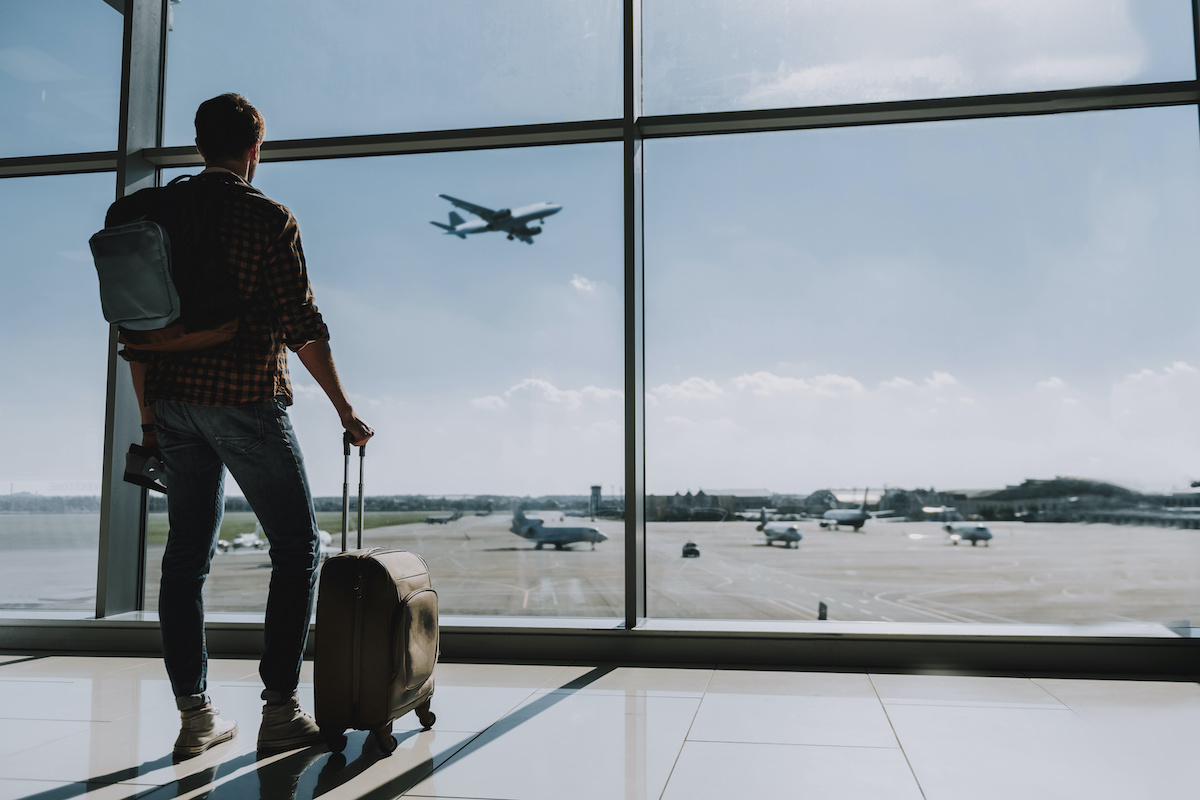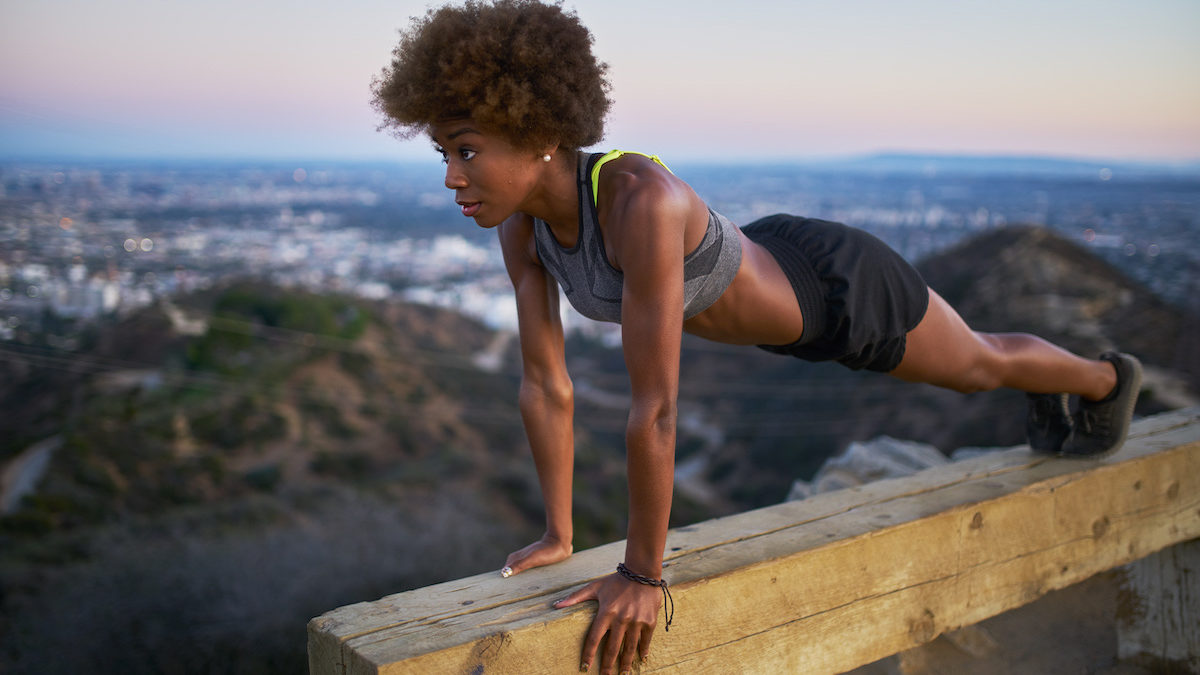How to Stay Fit and Healthy When You’re Travelling

As enriching as travel can be, frequent jet setting can wreak havoc on healthy lifestyles. Should the key to your training and nutrition lie in routine, then long hours spent in airports or train stations, buses, trains, and planes, can all prove turbulent to the many facets of wellness you try hard to commit to.
But a small amount of discipline during your travels is all it takes to conquer the obstacles of airport fast food joints, a relative lack of facilities and sleep deprivation. Here, we’ve tapped into our expert base for some tried and tested techniques to stay fit and healthy on your upcoming work trips and summer holidays.
Time Your Eating Right
In catering to the needs of overseas clients, personal trainer and physiotherapist Tim Blakey is well versed in managing unhealthy travel days. One way he does so is by abstaining from airport and air travel’s limited food outlet choices.
“Even if it’s from your healthy-ish outlet of choice, I’d recommend preparing your own travel food wherever possible,” says Blakey.
“It’s best to have control of what you’re eating. There’s not much choice inside a metal canister at 50,000 feet, and when combined with lack of distraction and the smell of food, it’s easy to make bad decisions if you don’t come prepared. Worse still is aeroplane food, loaded with preservatives and heated in plastic, which comes with dangers further reaching than your gut.”
Considered by many to be better than coming prepared, however, is opting to fast during travel periods. Be aware, however, that it’ll require stronger willpower than usual due to plane-induced boredom, so Blakey recommends practising intermittent fasting ahead of your travels in preparation.
Not only will abstaining from food while travelling through time zones enable you to avoid making unhealthy choices, but it has also been shown to assist in resetting your circadian rhythm once you land. In turn, this will help energize you so that you can stick to your regular training plan and make better food choices throughout your trip. To optimise this body clock reset, it’s best to avoid caffeine before and during your flight, too.

The Airport Is Your Gym
Air travel comes with particularly restrictive environments on the mobility and training front, especially so when you’re trapped in a delay between long haul flights. Few airports offer any comprehensive apparatus to conduct the type of workout you might be used to, but getting mobile can make a world of difference to how you feel during your flight (where you’re bound to your seat) and after you land.
Blakey recommends a mobility sequence that takes up minimal space and requires no equipment, working on the areas most confined when you fly. It’s the perfect routine to pass the time while you wait to board your flight.
- Start with four sun salutations from a deep lunge position. Reach one hand overhead, keeping your eyes on your thumb, then return that arm into the inside of your front knee. Repeat for four reps.
- Keeping your chest low to your front knee, rock back until you feel a stretch in the hamstring, being careful not to raise your torso as you straighten your knee. Repeat this for four reps, too.
- Lastly, bring the front leg out to the side in a straightened position, foot level with the hip. Move the hips back towards the heels while you drop the chest as far toward the ground as possible, then return to the starting position. Do four times on one side before switching.
Should you be worried about fellow passengers staring, Blakey’s advice is simple – don’t be. “I have hope that this will become common practice in the years to come, as we continue to spread the importance of becoming more body aware.
The World Is Your Gym
If your onward destination is lacking the Technogym gloss of your home haunt, now’s the time to try new things. Not all hotels are fitted with a comprehensive fitness offering, but there are many substitutes that can be made to emulate your usual workout.
Chairs can be used as steps for raises and suitcases or bags used as weights. Most effective, though, is a door to attach a TRX suspension trainer to.
“The TRX is one of the most versatile pieces of fitness equipment you can own,” says Blakey. “You can work every muscle in your body with a TRX, and best of all, it takes up very little room in your luggage.”
If motivation comes less easy than simply changing your perception of a suitcase to a barbell, however, app-based fitness programmes can act as pocket PT to help you get inspired. Blakey’s app-based programmes at PR1MEBODY contain gym-based programmes with alternative exercise options that suit most fitness setups, including small hotel gyms, while the PR1ME-Minimalist TRX and home-based plans cater to circumstances where a gym is less accessible.

Listen To Your Body
Contrary to the high-intensity, all or nothing mentality that some trainers might preach in the pursuit of fitness, travel fatigue is best dealt with by listening to your body. Feeling tired? “Then sleep,” concedes Blakey. “Even if it’s just a short nap – especially if you have a deficit of more than a few hours.” Long haul travel can come with major side-effects for your energy levels, so it’s important to aim to rectify your sleeping pattern as soon as you can.
“If it’s already late in the afternoon and you really want to get your circadian rhythm on track, try a workout,” Blakey continues. “Use the principle that anything is better than nothing, rather than completely exhausting yourself. It doesn’t have to be intense; it could simply be a mobility sequence or incline walk for 10 minutes.”
_
Form’s Performance and Superblend Protein come in 40g sachets, making for perfect travel-friendly fitness supplementation. Each sachet packs 30g of plant-based protein and mixes nicely with just water for the utmost convenience.
Boost, meanwhile, combines caffeine and L-theanine – a calming amino acid – which can assist in powering through the jet lag without the jittery feeling of too much coffee.


















